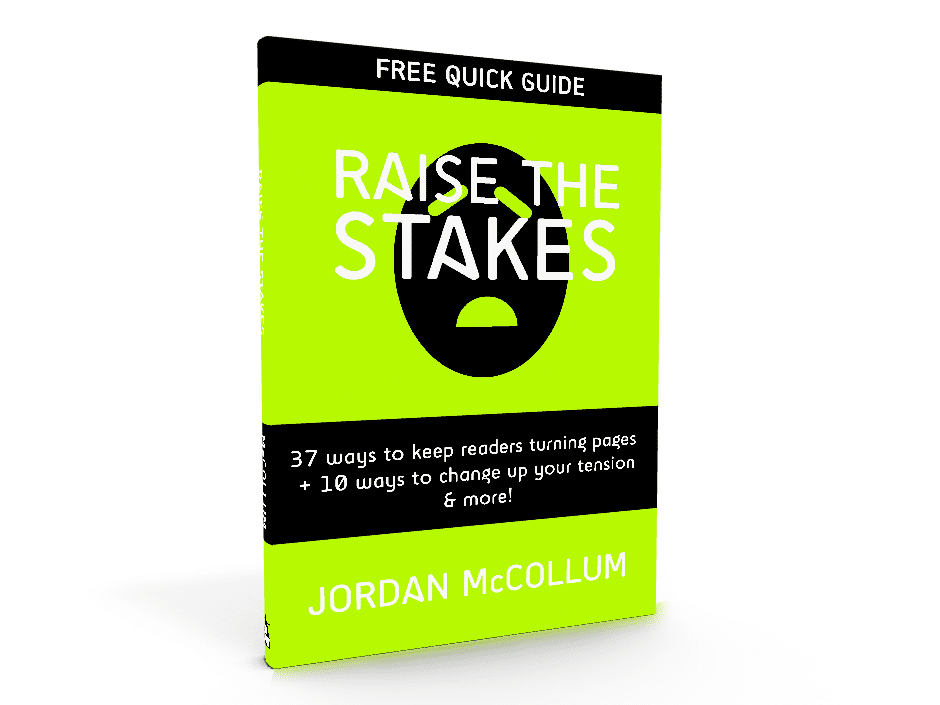Join one critique group and you’re sure to have someone point out an instance of telling in your writing with the admonishment: “SHOW DON’T TELL!”
 Now, I’m going to tell you right now: that’s quite often good advice. I’m not one for slavishly adhering to rules, but when I read a book that routinely tells me about what people are thinking rather than showing me that they’re thinking it, it drives me crazy. It’s like reading about a story rather than reading the story itself.
Now, I’m going to tell you right now: that’s quite often good advice. I’m not one for slavishly adhering to rules, but when I read a book that routinely tells me about what people are thinking rather than showing me that they’re thinking it, it drives me crazy. It’s like reading about a story rather than reading the story itself.
One common place I’ve come to focus on is showing vs. telling is in character’s emotions.
Bad telling:
She felt tired. She always felt tired. Every day, they had this meeting and she just wanted to sleep.
Better showing:
Her eyelids sagged, but Marie didn’t notice that she was falling asleep until her head began to droop. She jerked upright again with a quick glance around the boardroom. No one met her eyes—many were dozing themselves. The midafternoon stockholder report was always the most difficult time of day to focus, whether she’d gone to bed at two or ten.
But it had almost always been two.
Showing has the power to bring a reader more deeply into the story—making them live the experience rather than just read about it. Vivid details and description can do that.
BUT (and there’s almost always a but) there are exceptions to this rule. Sometimes, vivid descriptions and details get in the way of the story. Sometimes, telling is the way to go. (Gasp.)
I know, it’s horrific to even read. But every once in a while, something needs to be told. Good reasons to tell: the details aren’t significant, won’t add to the setting, slow down the story or get in the way of emotions.
Bad showing:
She stood among the racks of children’s clothing, but her eyes didn’t see the blue and yellow horizontal striped miniature polo shirts, or the pink polka dotted dresses with ruffled lace bloomers hanging on rack to her right. Nor the green, blue and orange plaid button downs, the purple beaded socks, the bedazzled jeans with magenta embroidery, the baby khakis with real zippers and buttoned pockets, in every size from preemie to 4T, folded on the shelves to her left.
What was her son doing now?
See the problem? Unless you’re trying to show us your POV character has an eidetic memory (300,000 word novel, anyone?), this level of detail probably isn’t necessary. In fact, showing the scene can be so time consuming that it drags on and becomes boring—and probably worst of all, it severely undercuts the emotional impact of the next line.
Better telling:
The bright colors and happy patterns of the children’s clothing department seemed to mock her pain, as if the miniaturized shirts and shorts could read her mind to see what she’d done, and taunt her for poor choices.
What was her son doing now?
 In this case, we really don’t need to “see” every detail of the children’s clothes. Now, a better way to accomplish both might be for the character to actually handle the children’s clothes, noting the details (perhaps she’s a seamstress who appreciates clothing construction and patterns?), her thoughts slipping back to her son.
In this case, we really don’t need to “see” every detail of the children’s clothes. Now, a better way to accomplish both might be for the character to actually handle the children’s clothes, noting the details (perhaps she’s a seamstress who appreciates clothing construction and patterns?), her thoughts slipping back to her son.
My favorite instance of confusion about showing and telling was prompted by a contest judge. She(?) marked the sentence “Sighing, Margaux pulled the hairpins from her hair” with “SHOW us the sigh.” (Note, too, that this was the only initial participial phrase in the chapter.) Well, okay:
Margaux’s thoracic diaphragm contracted, expanding her thoracic cavity and creating a vacuum in her lungs. Air at atmospheric pressure rushed in to fill her lungs. Once they were at optimal capacity, and a good proportion of the oxygen content had transpired into her bloodstream, Margaux reached the full depth of her frustration with her disheveled coif. She contracted her external intercostal muscles, audibly forcing a stream of air through her nostrils, and pulled the hairpins from her hair.
Clearly, sighing isn’t something that has to be shown like that. In fact, with some actions, simply using the verb is enough to show them.
Yes, yes, you’ll be told a million times “show, don’t tell” before you’re published, but really, telling has its (very limited!) place, too.
What do you think? Is there a place for telling as well as for showing? When do you use them?
Photo credits: shh!—Ann; shout—Maciek Łempicki



Great post. I’m constantly arguing with old stiffs even that telling has its place. Thanks. I’m sending them all the link to this post.
Great post. Thanks, Jordan. I agree with everything you said. And I’d add that the use of showing and telling can be used to speed up or slow down the pace. When the pace should be fast, you show show show. When there’s an intimate moment, I think it’s ok to tell a bit to slow down the pace.
Thanks again. I’ve been enjoying this whole series. Will have to link to it from my blog.
Very well said, Jordan! “Show don’t tell” is good advice, but any good advice can be taken too far, and telling definitely has its place. Great blog.
You are too funny! Loved that sigh! Great points. 🙂
@Joylene—oh boy! I”ll expect lots of traffic from you 😉 .
@Samantha—Great point—showing and telling can control the pace, too. But note, too, that it can work both ways. Showing can also slow down the pace (it requires more details), and telling can speed it up (generally takes fewer words).
@Stephanie—Thank you!
@Rachelle—Thanks. *sigh* 😉
I was about to disagree with you but then you disagreed with yourself and did it for me 🙂
I’m getting tired of the advice that generally flows like “Instead of *telling* the reader something in this one concise line, you should *show* the reader this in 15 flamboyant lines that take up half the page that *shows* how she feels about blowing her nose.”
I want to change the “show, don’t tell” mantra into “Show, don’t tell, but keep it within the same approximate word count”
😉
…which would make your sleepy example to something like:
If she could pour coffee on her head and magically awaken, it would become her morning meeting ritual.
18 words vs 19 original :p
@Andrew—If you want to do it in the same word count, that’s cool. But showing usually does take more words—and to me that’s another advantage of showing 😉 .
Yay! We do disagree! 🙂
That works well for NaNoWriMo, but in general, more words != better words.
I’ve seen cases where people take the “don’t tell” advice and just wind up “telling” it in more words.
All I’m saying is that “showing in fewer words” > “showing in more words”
And this is probably because I just write too much so I’m always looking for ways to cut word count while improving the actual words.
🙄 🙂
Remember, I’m not NaNoing.
Showing in enough words > showing in fewer words. Terseness isn’t always a virtue, especially when we sacrifice clarity, vividness, or the opportunity for an emotional connection.
But then, it does depend on your drafting style. I tend to draft short, even while showing, and add more later in edits. (But it’s nice to start editing with at least a book-length manuscript). And as you’ve said, you tend to draft long, so conserving words is important.
I was thinking about this again, and I realized that part of the reason why showing usually takes more words is because (esp in deep POV) the narration takes the form of Evidence, Conclusion when you’re showing:
She looked away, her eyes shifting without focusing. Was she really ashamed? Good. The wench.
When we’re telling, we skip to the conclusions:
She was ashamed.
This was also the subject of a post in the Deep POV series: http://jordanmccollum.com/2009/07/your-characters-thoughts-in-real-time/ .